arizona
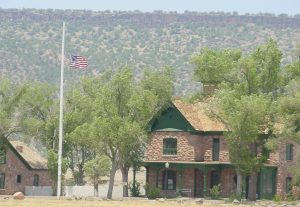
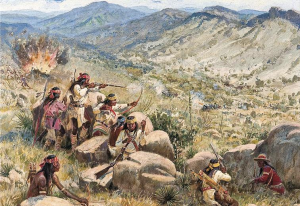 During our nation’s early years, there were many times when we found it necessary to build forts to protect the people in the area. The forts housed the armies and also took in civilians when needed. In 1870, the government built a military post four miles south of what is today, Whiteriver, Arizona. The fort was named Camp Ord, and was named after General O.C. Ord, Commander of Arizona when it was built in the spring. Just a few months later in August, the name was changed to Camp Mogollon, then Camp Thomas in September. It seems almost comical that the name would change so many times, but that was how things were done then, I guess.
During our nation’s early years, there were many times when we found it necessary to build forts to protect the people in the area. The forts housed the armies and also took in civilians when needed. In 1870, the government built a military post four miles south of what is today, Whiteriver, Arizona. The fort was named Camp Ord, and was named after General O.C. Ord, Commander of Arizona when it was built in the spring. Just a few months later in August, the name was changed to Camp Mogollon, then Camp Thomas in September. It seems almost comical that the name would change so many times, but that was how things were done then, I guess.
The post received it’s final name…Camp Apache on February 2, 1871, as a token of friendship to the Apache Indians. Ironically, the soldiers at the fort would soon spend many years at war with these same Indians they were trying to befriend. The fort’s initial purpose was to guard the nearby White Mountain Reservation and Indian agency. The fort was located at the end of a military road on the White Mountain Reservation. Right next to that was the San Carlos Agency. Both reservations would become the focus of Apache unrest, especially after troops moved the troublesome Chiricahuas from Fort Bowie to the White Mountain Reservation in 1876.
The area was in constant turmoil, mostly because the reservations were noted for their unhealthful location, overcrowded conditions, and dissatisfied inhabitants. Inefficient and corrupt agents added to the problem, and friction between civil and military authorities grew. Several attempts to turn the nomadic Indians into farmers, and an influx on the reservations of settlers and miners only added to the problem, and battles became the normal everyday event. As a result, many of the Indians left the reservations to resume their hunting, gathering, and raiding lifestyle, creating a public outcry from the settlers.
In 1871, General George Crook was named commander of the Department of Arizona. Crook had earned a reputation as an Indian fighter in the Snake War in Idaho and Oregon. Crook quickly realized that his soldiers were no match for the fierce Apache he was sent to subdue, so he made his first trip to Fort Apache. At the reservation, he recruited about fifty men to serve as Apache Scouts. These men would play a key role in the success of the Army in the Apache Wars which ensued for the next 15 years.
After recruiting the scouts, Crook prepared for his Tonto Basin campaign. Then he moved on to Camp Verde to implement his tactical operations there. During the winter of 1872-1873, Crook sent a number of mobile detachments, using Apache scouts, to crisscross the Tonto Basin and the surrounding tablelands in constant pursuit of renegade Tonto Apache and their Yavapai allies. The campaigns forcing as many as 20 skirmishes. In all some 200 Indians were killed. The battles finally began to wear down the Indians. On April 5, 1879, Camp 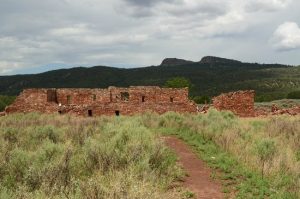
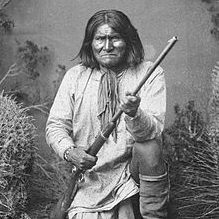 Apache had gained enough significance that it was renamed Fort Apache. The battles with the Apache continued as the soldiers fought various renegade bands that included such famous warriors as Geronimo, Natchez, Chato, and Chihuahua. It was only after Geronimo was captured for the last time in 1886, that the Apache Wars finally came to an end…and with it the need for Fort Apache. Nevertheless, it remained active until 1924. Then it was closed and the area given back to the reservation.
Apache had gained enough significance that it was renamed Fort Apache. The battles with the Apache continued as the soldiers fought various renegade bands that included such famous warriors as Geronimo, Natchez, Chato, and Chihuahua. It was only after Geronimo was captured for the last time in 1886, that the Apache Wars finally came to an end…and with it the need for Fort Apache. Nevertheless, it remained active until 1924. Then it was closed and the area given back to the reservation.
 Imagine being given the name Haskay-bay-nay-natyl, at birth. Nevertheless, the name, which means “the tall man destined to come to a mysterious end,” was given to a baby born in the 1860s on the San Carlos Reservation in Arizona. Because his name was strange and difficult to pronounce, the citizens of Globe simply called him “Kid.” Haskay-bay-nay-natyl was most likely a White Mountain Apache.
Imagine being given the name Haskay-bay-nay-natyl, at birth. Nevertheless, the name, which means “the tall man destined to come to a mysterious end,” was given to a baby born in the 1860s on the San Carlos Reservation in Arizona. Because his name was strange and difficult to pronounce, the citizens of Globe simply called him “Kid.” Haskay-bay-nay-natyl was most likely a White Mountain Apache.
Eventually, the nickname was changed to the Apache Kid, and he was said to have been the fiercest Apache, other than Geronimo. The Apache Kid learned English at an early age, and began working odd jobs in Globe. Soon, he was befriended by the famous scout, Al Sieber. At that time, early settlers of the Southwest faced numerous raiding bands of Apache and General George Crook had come up with the idea to use Apache to fight other Apache. They began enlisting Apache Indians from San Carlos and other reservations. The enlisted scouts could locate the trails that the hunted Apache traveled. In 1881, the Kid enlisted in the Indian Scouts. He was so good at the job that he was promoted to sergeant in July, 1882. The following year he accompanied General George Crook on the expedition of the Sierra Madre.
The Geronimo Campaign of 1885-1886 found the Kid in Mexico early in 1885 with Sieber. When the Chief of Scouts was recalled that fall, Kid rode with him back to San Carlos.
Apache Kid re-enlisted with Lieutenant Crawford’s call for one hundred scouts for Mexican duty, and again went 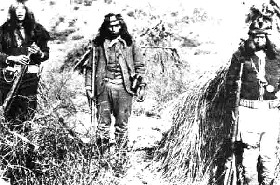 south in late 1885. In the Mexican town of Huasabas, on the Bavispe River, the Kid nearly lost his life in a drunken riot that he participated in. The judge in the case decided that rather than see the Apache Kid shot by a Mexican firing squad, he would fine him twenty dollars. The Army sent him back to San Carlos. In May, 1887 the Apache Kid was left in charge of the Indian Scouts and guardhouse at San Carlos when Captain Pierce and Al Sieber, an Anglo scout, were both gone on business. Though the brewing of Tiswin, a beverage made of fermented fruit or corn, was illegal on the reservation, but the white officers gone, so the Indian Scouts decided to have a party. As the liquor flowed freely, a man named Gon-Zizzie killed the Apache Kid’s father, Togo-de-Chuz. Kid’s friends, in turn, killed Gon-Zizzie. However, the killing of Gon-Zizzie was not enough for the Apache Kid, who then went to the home of Gon-Zizzie’s brother, Rip, and killed him too.
south in late 1885. In the Mexican town of Huasabas, on the Bavispe River, the Kid nearly lost his life in a drunken riot that he participated in. The judge in the case decided that rather than see the Apache Kid shot by a Mexican firing squad, he would fine him twenty dollars. The Army sent him back to San Carlos. In May, 1887 the Apache Kid was left in charge of the Indian Scouts and guardhouse at San Carlos when Captain Pierce and Al Sieber, an Anglo scout, were both gone on business. Though the brewing of Tiswin, a beverage made of fermented fruit or corn, was illegal on the reservation, but the white officers gone, so the Indian Scouts decided to have a party. As the liquor flowed freely, a man named Gon-Zizzie killed the Apache Kid’s father, Togo-de-Chuz. Kid’s friends, in turn, killed Gon-Zizzie. However, the killing of Gon-Zizzie was not enough for the Apache Kid, who then went to the home of Gon-Zizzie’s brother, Rip, and killed him too.
When the Apache Kid and the four other scouts returned to San Carlos on June 1, 1857, both Captain Pierce and Al Sieber were there ahead of him. Captain Pierce ordered the scouts to disarm themselves and the Kid was the first to comply. As Pierce ordered them to the guardhouse to be locked up, a shot was fired from the 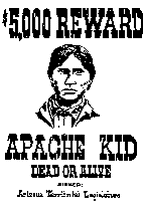 crowd who had gathered to watch the display of events. In no time, the shots became widespread and Al Seiber was hit in the ankle, which ended up crippling him for life. During the melee that followed, the Apache Kid and several other Apache fled. Though it was never determined who fired that shot that struck Sieber, it was for sure not the Kid nor the other four scouts ordered to the guardhouse as they had all been disarmed.
crowd who had gathered to watch the display of events. In no time, the shots became widespread and Al Seiber was hit in the ankle, which ended up crippling him for life. During the melee that followed, the Apache Kid and several other Apache fled. Though it was never determined who fired that shot that struck Sieber, it was for sure not the Kid nor the other four scouts ordered to the guardhouse as they had all been disarmed.
Over the next few years, Apache Kid was accused of, imprisoned for, escaped from or was released from prison for many crimes. It is not certain if he was guilty of these things or not. Some said that he was innocent and actually helped those under attack, but many said he was the attacker. Eventually, the Apache Kid disappeared and was never officially seen again. Some said he died, while other said he went to Mexico to a secret mountain hideaway. The jury is still out as to whether he was a good guy, or a bad guy, and the world will most likely never know.
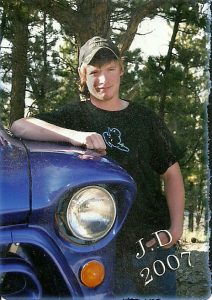 My nephew, JD Parmely is a car fanatic. I have never known anyone who owns more cars than he does, and the number keeps getting bigger. I suppose, that as the saying goes, “to each his own” really applies here. Cars are JD’s thing, and he can often be found out in his garage tinkering on one of them…sometimes until 2:00 in the morning. It is what makes him happy, and it has from the time he was old enough to think about cars. JD knew from a young age that he wanted to be a mechanic, and so he went to college in Arizona for his training, and now, not only does he work on his own cars but he is a mechanic by trade too. They say that when you love what you do, you’ll never work a day in your life. That certainly is true for JD.
My nephew, JD Parmely is a car fanatic. I have never known anyone who owns more cars than he does, and the number keeps getting bigger. I suppose, that as the saying goes, “to each his own” really applies here. Cars are JD’s thing, and he can often be found out in his garage tinkering on one of them…sometimes until 2:00 in the morning. It is what makes him happy, and it has from the time he was old enough to think about cars. JD knew from a young age that he wanted to be a mechanic, and so he went to college in Arizona for his training, and now, not only does he work on his own cars but he is a mechanic by trade too. They say that when you love what you do, you’ll never work a day in your life. That certainly is true for JD.
It would be my guess that the only job JD loves more than being a mechanic, is being an uncle. Since the first time he became 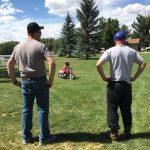 an uncle, he was in love with that whole part of his life. JD’s brother, Eric Parmely and sister-in-law, Ashley now have three children, so JD is uncle to Reagan, Hattie, and Bowen. He takes his role very seriously, spending time with them whenever he can, and I’m sure that he is considered a great blessing to them. JD has a heart of gold, and those kids all know how much their uncle loves them, and like most uncles, they have him wrapped around their little fingers already. JD has a soft heart in that area, and I’m pretty sure that those kids know it too.
an uncle, he was in love with that whole part of his life. JD’s brother, Eric Parmely and sister-in-law, Ashley now have three children, so JD is uncle to Reagan, Hattie, and Bowen. He takes his role very seriously, spending time with them whenever he can, and I’m sure that he is considered a great blessing to them. JD has a heart of gold, and those kids all know how much their uncle loves them, and like most uncles, they have him wrapped around their little fingers already. JD has a soft heart in that area, and I’m pretty sure that those kids know it too.

JD is the kind of guy you can always count on. He has been a ready help to his brothers and uncles whenever they asked him. He has also been good to his dad, even taking him into his home after he had a stroke, and helping him with the demands of his new health status. Having been a caregiver myself for 13 years, I can say that taking care of someone is no easy job, and those who do it deserve our respect. All in all, JD live a very busy life, sometimes it can wear a person out just thinking about it, but it’s what makes him happy, so that’s all that matters. Today is JD’s birthday. Happy birthday JD!! Have a great day!! We love you!!
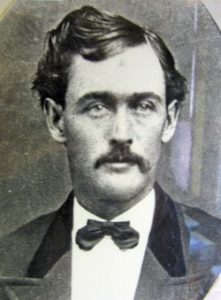 Many men helped to tame the wild west, but unfortunately things didn’t always go exactly as the lawmen planned. Billy Daniels was a pretty typical lawman, but like the thousands of courageous young men and women who helped tame the Wild West, whose names and stories have since been largely forgotten, Billy was not a well remembered lawman. For every Wild Bill Hickok or Wyatt Earp, who have been immortalized by the dramatic exaggerations of dime novelists and journalists, the West had dozens of men like Billy Daniels, who quietly did their duty with little fanfare, celebration, or thanks.
Many men helped to tame the wild west, but unfortunately things didn’t always go exactly as the lawmen planned. Billy Daniels was a pretty typical lawman, but like the thousands of courageous young men and women who helped tame the Wild West, whose names and stories have since been largely forgotten, Billy was not a well remembered lawman. For every Wild Bill Hickok or Wyatt Earp, who have been immortalized by the dramatic exaggerations of dime novelists and journalists, the West had dozens of men like Billy Daniels, who quietly did their duty with little fanfare, celebration, or thanks.
On December 8, 1883, five desperadoes led by Daniel “Big Dan” Dowd, rode into the booming mining town of Bisbee, Arizona. Dowd had heard that the $7,000 payroll of the Copper Queen Mine would be in the vault at the Bisbee General Store. He had planned to surprise the store owners, and make off with the payroll, but things didn’t go exactly as planned. When the outlaws barged into the store with their guns drawn, demanding the payroll, they discovered, to Dowd’s disappointment, that they were too early. The payroll hadn’t arrived yet. The outlaws quickly gathered up what money there was, somewhere between $900 to $3,000, and took valuable rings and watches from the customers who just happened to be in the store. After the robbery, for reasons that are unclear…but possibly, anger…the robbery turned into a slaughter. When the five desperadoes rode away, they left behind four dead or dying people, including Deputy Sheriff Tom Smith and a Bisbee woman named Anna Roberts.
The people of Arizona were stunned. The people had cooperated with the outlaws. There was no reason to kill 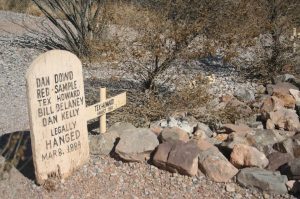 those people. The killings were a completely senseless show of brutality. The newspapers called it the “Bisbee Massacre.” The sheriff quickly organized citizen posses to track down the killers, placing Deputy Sheriff Billy Daniels at the head of one. Unfortunately, the posses soon ran out of clues and the trail grew cold. Most of the citizen members gave up, but not Daniels. He stubbornly continued the pursuit alone. Daniels eventually learned the identities of the five men from area ranchers and began to track them down one by one.
those people. The killings were a completely senseless show of brutality. The newspapers called it the “Bisbee Massacre.” The sheriff quickly organized citizen posses to track down the killers, placing Deputy Sheriff Billy Daniels at the head of one. Unfortunately, the posses soon ran out of clues and the trail grew cold. Most of the citizen members gave up, but not Daniels. He stubbornly continued the pursuit alone. Daniels eventually learned the identities of the five men from area ranchers and began to track them down one by one.
Daniels found one of the killers in Deming, New Mexico, and arrested him. He then learned from a Mexican informant that the gang leader, Big Dan Dowd, had fled south of the border to a hideout at Sabinal, Chihuahua. Daniels went under cover, disguising himself as an ore buyer. He tricked Dowd into a meeting and took him prisoner. A few weeks later, Daniels returned to Mexico and arrested another of the outlaws. Other law officers apprehended the remaining two members of the gang. A jury in Tombstone, Arizona, quickly convicted all five men. They were sentenced to be hanged simultaneously. As the noose was fitted around his neck on the five-man gallows, Big Dan reportedly muttered, “This is a regular killing machine.”
Daniels ran for sheriff the net year, but oddly lost. I would think that a hometown hero would be a shoo-in. After all he had done for the town, it would seem that being the sheriff was a thankless job. He found a new  position as an inspector of customs. The job required him to travel all around the vast and often isolated Arizona countryside, where various bands of hostile Apache Indians were a serious danger. Early on the morning of June 10, 1885, Daniels and two companions were riding up a narrow canyon trail in the Mule Mountains east of Bisbee. Daniels, who was in the lead, rode into an Apache ambush. The first bullets killed his horse, and the animal collapsed, pinning Daniels to the ground. Trapped, Daniels used his rifle to defend himself as best he could, but the Apache quickly overwhelmed him and cut his throat. A mere two years after Arizona Deputy Sheriff William Daniels apprehended three of the five outlaws responsible for the Bisbee Massacre, it was an Apache Indians ambush that would end his life. His two companions escaped with their lives and returned the next day with a posse. They found Daniels’ badly mutilated corpse but were unable to track the Apache Indians who murdered him. I guess they lacked Daniels’ under cover or investigative skills.
position as an inspector of customs. The job required him to travel all around the vast and often isolated Arizona countryside, where various bands of hostile Apache Indians were a serious danger. Early on the morning of June 10, 1885, Daniels and two companions were riding up a narrow canyon trail in the Mule Mountains east of Bisbee. Daniels, who was in the lead, rode into an Apache ambush. The first bullets killed his horse, and the animal collapsed, pinning Daniels to the ground. Trapped, Daniels used his rifle to defend himself as best he could, but the Apache quickly overwhelmed him and cut his throat. A mere two years after Arizona Deputy Sheriff William Daniels apprehended three of the five outlaws responsible for the Bisbee Massacre, it was an Apache Indians ambush that would end his life. His two companions escaped with their lives and returned the next day with a posse. They found Daniels’ badly mutilated corpse but were unable to track the Apache Indians who murdered him. I guess they lacked Daniels’ under cover or investigative skills.
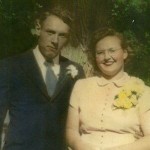 As children, the played together and even napped together, but in high school, my mother-in-law, Joann Knox Schulenberg wasn’t so sure that she liked her childhood friend very much. I don’t know if it was his teasing, or what, but I do know that my father-in-law, Walt Schulenberg was a pretty good teaser. Of course, it was always in good clean fun, and before long, she rediscovered the reasons she liked him when they were young. Before long, they knew that their love was the forever kind of love, and so they married and began their life together. Their life would take them away from their hometown of Forsyth, Montana, and eventually land them and their young family in Casper, Wyoming, which would be their home for the remainder of their lives, with the exception of the snowbird years, when they wintered in Yuma, Arizona.
As children, the played together and even napped together, but in high school, my mother-in-law, Joann Knox Schulenberg wasn’t so sure that she liked her childhood friend very much. I don’t know if it was his teasing, or what, but I do know that my father-in-law, Walt Schulenberg was a pretty good teaser. Of course, it was always in good clean fun, and before long, she rediscovered the reasons she liked him when they were young. Before long, they knew that their love was the forever kind of love, and so they married and began their life together. Their life would take them away from their hometown of Forsyth, Montana, and eventually land them and their young family in Casper, Wyoming, which would be their home for the remainder of their lives, with the exception of the snowbird years, when they wintered in Yuma, Arizona.
Over the years their family would grow as six children joined, one at a time. Four daughters and two sons 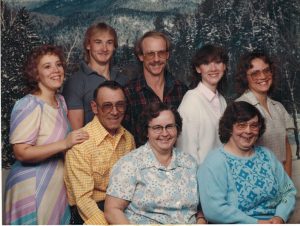 blessed their lives. The girls learned all the homemaking skills that their mother had to offer, from sewing to crocheting, to cooking and canning, ad of course, cleaning and doing laundry. Their mother poured all of her housekeeping knowledge into her daughters, so they would have the necessary skills to make homes of their own. For his part, their dad took his sons under his wing and taught them mechanics, so that they could keep their vehicles in good running condition. He taught them how to build things…everything from a simple shelf to an entire home. He gave them the skills they would need to make a living and take care of the needs of their families. As the years went by, their six children blessed them with ten grandchildren, 13 great grandchildren, and since their passing a new great
blessed their lives. The girls learned all the homemaking skills that their mother had to offer, from sewing to crocheting, to cooking and canning, ad of course, cleaning and doing laundry. Their mother poured all of her housekeeping knowledge into her daughters, so they would have the necessary skills to make homes of their own. For his part, their dad took his sons under his wing and taught them mechanics, so that they could keep their vehicles in good running condition. He taught them how to build things…everything from a simple shelf to an entire home. He gave them the skills they would need to make a living and take care of the needs of their families. As the years went by, their six children blessed them with ten grandchildren, 13 great grandchildren, and since their passing a new great 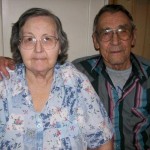 great granddaughter. The family has spent many years enjoying many wonderful family moments and many holidays. Some of their greatest joys were bring grandparents and great grandparents.
great granddaughter. The family has spent many years enjoying many wonderful family moments and many holidays. Some of their greatest joys were bring grandparents and great grandparents.
Joann and Walt were married on June 6, 1949 in Forsyth, Montana, and had been married almost 64 years when Walt went home to Heaven n May 5, 2013. Joann followed him this year on January 4, 2018, and so this is their first anniversary in Heaven. While we miss them very much, we are happy that they are together again. Happy anniversary Mom and Dad. It would have been 69 years today, since you said, “I do.” We love and miss you very much.
 My sister-in-law, Jennifer Parmely is a complex woman, who leads a busy life. She is an obstetrics nurse by trade, but that is just her career, albeit a very satisfying one for her. Jennifer knew when she was just 17 years old, that she wanted to be a nurse, and before long, she knew that she wanted to help bring life into the world. She has never changed her mind about that, and has been a nurse at Wyoming Medical Center for about 36 years now. That adds up to a whole lot of babies who can say that Jennifer was there the day they were born. She was the nurse who assisted in the births of all four of my grandchildren. It was very comforting to have her there.
My sister-in-law, Jennifer Parmely is a complex woman, who leads a busy life. She is an obstetrics nurse by trade, but that is just her career, albeit a very satisfying one for her. Jennifer knew when she was just 17 years old, that she wanted to be a nurse, and before long, she knew that she wanted to help bring life into the world. She has never changed her mind about that, and has been a nurse at Wyoming Medical Center for about 36 years now. That adds up to a whole lot of babies who can say that Jennifer was there the day they were born. She was the nurse who assisted in the births of all four of my grandchildren. It was very comforting to have her there.
While nursing is Jennifer’s career, exercise is her passion. She loves all forms of 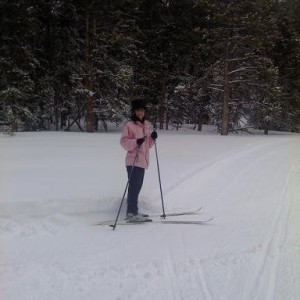 exercise, both indoor and outdoor. I think that like many of us in the family, she loves to hike. She takes trips to different areas to hike. She has been to New Zealand, Colorado, and today, she and her boyfriend, Bryan are on their way to Arizona to do some hiking there. She hiked a mountain with Bryan a while back in Colorado that was 14,000 feet high. That is an amazing feat for anyone. I have done quite a bit of hiking, but I have never gone to that altitude, so I am curious about how I would do. Jennifer and Brian did very well, but they saw people around them who were having some difficulty breathing deeply. I suppose it all depends on the shape you are in and the lung capacity you have. I don’t know where in Arizona they plan to go hiking, but since I have been in Arizona a number of times and hiked there too, I
exercise, both indoor and outdoor. I think that like many of us in the family, she loves to hike. She takes trips to different areas to hike. She has been to New Zealand, Colorado, and today, she and her boyfriend, Bryan are on their way to Arizona to do some hiking there. She hiked a mountain with Bryan a while back in Colorado that was 14,000 feet high. That is an amazing feat for anyone. I have done quite a bit of hiking, but I have never gone to that altitude, so I am curious about how I would do. Jennifer and Brian did very well, but they saw people around them who were having some difficulty breathing deeply. I suppose it all depends on the shape you are in and the lung capacity you have. I don’t know where in Arizona they plan to go hiking, but since I have been in Arizona a number of times and hiked there too, I 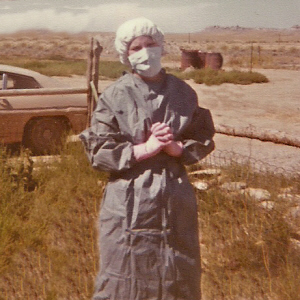 would absolutely recommend the Grand Canyon. We didn’t hike very far in, but the areas we were in were amazing. The next time I go, I want to hike down to the river. I know that wherever they hike, they will have a great time.
would absolutely recommend the Grand Canyon. We didn’t hike very far in, but the areas we were in were amazing. The next time I go, I want to hike down to the river. I know that wherever they hike, they will have a great time.
In many ways, Jennifer’s love of all things healthy has made her not only a nurse helping to bring life into the world, but also a person keeping her own life as strong and healthy as it can be. It’s a great way to live and one that will keep Jennifer, the grandma, in the lives of her three little grandchildren, Reagan, Hattie, and Bowen Parmely, for a long time to come. Today is Jennifer’s birthday. Happy birthday Jennifer!! Have a great day!! We love you!!

 Most people have an idea in their head about what the continental United States looks like, but it was almost slightly different than it is now. The United States acquired the bulk of the southwestern corner of the nation from Mexico in 1848 as victors’ spoil after the Mexican War. However, congressional leaders who were eager to begin construction of a southern railroad, wanted to push the border farther to the south. The government directed James Gadsden, the American minister to Mexico, to negotiate the purchase of an additional 29,000 square miles. If you’re like me, you might be wondering what was so important about those 29,000 square miles. It’s a very small section, compared to other land purchases made by the United States, after all. Yet, this little piece of land was very important to the government. The purchase included lands south of the Gila River and west of the Rio Grande which the United States acquired so that it could construct a transcontinental railroad along a deep southern route, which the Southern Pacific Railroad completed in 1881/1883.
Most people have an idea in their head about what the continental United States looks like, but it was almost slightly different than it is now. The United States acquired the bulk of the southwestern corner of the nation from Mexico in 1848 as victors’ spoil after the Mexican War. However, congressional leaders who were eager to begin construction of a southern railroad, wanted to push the border farther to the south. The government directed James Gadsden, the American minister to Mexico, to negotiate the purchase of an additional 29,000 square miles. If you’re like me, you might be wondering what was so important about those 29,000 square miles. It’s a very small section, compared to other land purchases made by the United States, after all. Yet, this little piece of land was very important to the government. The purchase included lands south of the Gila River and west of the Rio Grande which the United States acquired so that it could construct a transcontinental railroad along a deep southern route, which the Southern Pacific Railroad completed in 1881/1883.
The purchase might not have been possible, were it not for the fact that the Mexican ruler, Santa Ana was eager to do business with the United States…despite having been badly beaten in war only five years earlier and forced to cede huge tracts of land to the victorious Americans. Santa Ana had only recently regained power, and he was in danger of losing office, unless he could quickly find funds to replenish his nearly bankrupt nation. Gadsden and Santa Ana agreed that the narrow strip of southwestern desert land was worth $10 million. When the treaty was signed on December 30, 1853, it became the last addition of territory…other than the purchase of Alaska in 1867…to the continental United States. The purchase also completed the boundaries of the American West.
In order to secure the area, the government established Fort Buchanan. It was also set up to protect emigrants traveling through the new territory from the Apache Indians, who were strongly resisting Anglo incursions, which they considered to be intrusive. With the outbreak of the Civil War four years later, northern politicians abandoned the idea of a southern line in favor of a northern route that eventually became the Union Pacific line, but the idea of a southern line remained…under the surface, but there nevertheless. It would take a number of years for that idea to become a reality, but since it did happen, I guess the original purpose for the purchase was honored after all.
On this day November 17, 1856, the United States founded Fort Buchanan, named after President James Buchanan three miles southwest of present-day Sonoita in Santa Cruz County, Arizona on the east slope of what is now called Hog Canyon. At the time, the area was under constant threat from hostile Apaches. Full-scale war with the local Chiricahua Apache was initiated by the Bascom affair in early 1861, during which 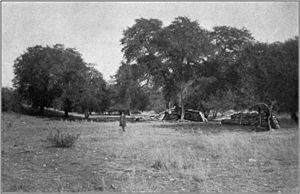
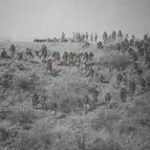 Lieutenant George Nicholas Bascom and his patrol were based at Fort Buchanan. The fort was officially abandoned in 1861, though troops of the California Column occasionally manned the post during the American Civil War. In February 1865, Apaches attacked and burned the fort in the Battle of Fort Buchanan, forcing the small garrison to retreat. It was then abandoned for good and Fort Crittenden was established half a mile east on the flats in 1867. Sadly, Fort Buchanan was never rebuilt.
Lieutenant George Nicholas Bascom and his patrol were based at Fort Buchanan. The fort was officially abandoned in 1861, though troops of the California Column occasionally manned the post during the American Civil War. In February 1865, Apaches attacked and burned the fort in the Battle of Fort Buchanan, forcing the small garrison to retreat. It was then abandoned for good and Fort Crittenden was established half a mile east on the flats in 1867. Sadly, Fort Buchanan was never rebuilt.
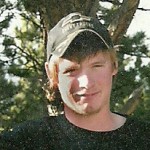
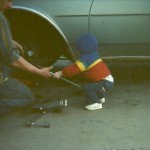 As a little boy, my nephew, JD Parmely could usually be found hanging out with the men in the family, looking for ways to help with whatever they happened to be working on at the time. He was a busy little boy, and he wanted to be a part of the guys group. I guess he knew, even at such a young age, that he wanted to be a mechanic too. JD came from a long line of mechanics, so it was in his blood, it would seem…and that suited JD just fine. When he grew up, JD decided that he would go to tech school to learn everything he needed to know to be a professional mechanic, and so he spent time in Arizona at school…before returning to Casper, Wyoming as quickly as possible, to get out of what he considered to be the horrible Arizona heat.
As a little boy, my nephew, JD Parmely could usually be found hanging out with the men in the family, looking for ways to help with whatever they happened to be working on at the time. He was a busy little boy, and he wanted to be a part of the guys group. I guess he knew, even at such a young age, that he wanted to be a mechanic too. JD came from a long line of mechanics, so it was in his blood, it would seem…and that suited JD just fine. When he grew up, JD decided that he would go to tech school to learn everything he needed to know to be a professional mechanic, and so he spent time in Arizona at school…before returning to Casper, Wyoming as quickly as possible, to get out of what he considered to be the horrible Arizona heat.
While the majority of JD’s assistance as a child, was handing the men a tool…if he could figure out which one they needed, he has long outgrown the days when he doesn’t know about tools. Now that he is educated in the field of mechanics, he works mostly on his own projects…of which there are many, since JD is an avid car owner, who owns more cars at one time than most of us do in a lifetime…and drives them all!! JD is of the belief that one can never have too many vehicles. His “Day Job” is in the same field…mechanics. JD loves his work so much that he just brings it home with him…or, in reality, just changes locations, and works on his own vehicles in the evenings. He can’t think of a better way to relax, than to work on a car, and I think the rest of the men in the family are exactly the same way.
For many years, JD was the student, gleaning knowledge about mechanics from his dad, grandpa, older brother, and uncles, but at some point, the student became the teacher. In this family, we have mechanics who specialize in various pars of mechanics, as well as the same types as the others. What that does, is to provide a sounding board for the others, when they have an issue with something they are working on. It also provides 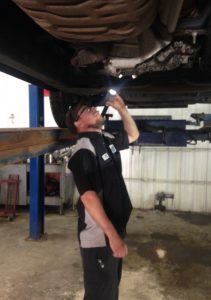
 for assistance when a job requires more than one mechanic. For me…lately anyway, it has seemed kind of odd, or maybe different, but not unexpected, that my husband, Bob, would be calling on his nephew, JD for information on a problem. I know it was bound to happen at some point, and has probably been going on for quite a while, but when I think about Bob asking JD for his help and ideas, I just have to smile, because the student has become the teacher. JD has come a long way, and yes he is another in a long line of mechanics, but somehow it just didn’t occur to me that he would be the go to guy for the other mechanics sometimes. Nevertheless, that’s what he is, and that’s what they are to him too. Today is JD’s birthday. Happy birthday JD!! Have a great day!! We love you!!
for assistance when a job requires more than one mechanic. For me…lately anyway, it has seemed kind of odd, or maybe different, but not unexpected, that my husband, Bob, would be calling on his nephew, JD for information on a problem. I know it was bound to happen at some point, and has probably been going on for quite a while, but when I think about Bob asking JD for his help and ideas, I just have to smile, because the student has become the teacher. JD has come a long way, and yes he is another in a long line of mechanics, but somehow it just didn’t occur to me that he would be the go to guy for the other mechanics sometimes. Nevertheless, that’s what he is, and that’s what they are to him too. Today is JD’s birthday. Happy birthday JD!! Have a great day!! We love you!!
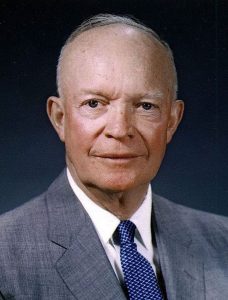 Recently, I found out that President Dwight D Eisenhower is my sixth cousin six times removed. We are connected on my mother’s side through her Pattan roots, which is her mother’s side. Eisenhower was the 34th president of the Unites States, serving from January 20, 1953 to January 20, 1961. He was also a five-star general in the United States Army during World War II and served as Supreme Commander of the Allied Expeditionary Forces in Europe. Eisenhower was responsible for planning and supervising the invasion of North Africa in Operation Torch in 1942 – 1943 and the successful invasion of France and Germany in 1944 – 1945 from the Western Front. In 1951, he became the first Supreme Commander of NATO.
Recently, I found out that President Dwight D Eisenhower is my sixth cousin six times removed. We are connected on my mother’s side through her Pattan roots, which is her mother’s side. Eisenhower was the 34th president of the Unites States, serving from January 20, 1953 to January 20, 1961. He was also a five-star general in the United States Army during World War II and served as Supreme Commander of the Allied Expeditionary Forces in Europe. Eisenhower was responsible for planning and supervising the invasion of North Africa in Operation Torch in 1942 – 1943 and the successful invasion of France and Germany in 1944 – 1945 from the Western Front. In 1951, he became the first Supreme Commander of NATO.
With everything else that he did, it seems odd, I suppose, to mention the fact that on March 18, 1959, he signed the Admission Act. Basically, the act dissolved the Territory of Hawaii and established the State of Hawaii as the 50th state to be admitted into the Union. Statehood became effective on August 21, 1959…the last state to join the United States. Eisenhower, in fact, was the president who signed the last two states into the United States. To me that must have been such an awe inspiring thing to get to do. My guess is that Eisenhower really had no idea that Hawaii would forever be the last state in the United States, and I suppose that it is still possible that 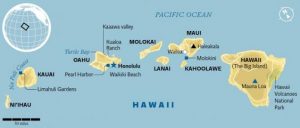 another may join, but it has been almost 58 years, so it seems highly unlikely that there will be another. I wonder if, as his life was drawing to a close, Eisenhower gave any thought to the fact that he got to do that…to bring in the final two states in the United States. I also wonder if anyone thought there would ever be more states after Arizona and New Mexico were added in 1912, almost 47 years earlier. Maybe, adding another state to our country didn’t seem like such an important thing for a president to do, but I think it is. And to be the president to add the last two states…well, I just think that is very cool.
another may join, but it has been almost 58 years, so it seems highly unlikely that there will be another. I wonder if, as his life was drawing to a close, Eisenhower gave any thought to the fact that he got to do that…to bring in the final two states in the United States. I also wonder if anyone thought there would ever be more states after Arizona and New Mexico were added in 1912, almost 47 years earlier. Maybe, adding another state to our country didn’t seem like such an important thing for a president to do, but I think it is. And to be the president to add the last two states…well, I just think that is very cool.
 Growing up, my sisters and I watched lots of westerns. It wasn’t so strange really, because westerns were the in thing back then. Everyone loved watching them. One show I remember watching was The Gunfight at the O.K. Corral. It all seemed like it took place so long ago, and to many people I guess it was. Still, when you think of the fact that Wyatt Earp, a frontiersman, marshal and gambler, who got into a feud in Tombstone, Arizona, that led to the famous gunfight at the O.K. Corral passed away quietly in Los Angeles on January 13, 1929, it doesn’t seem so long ago anymore. I guess that in Wyatt Earp’s case, old gunfighters never die, they just lose their fight. Wyatt Earp was born on March 19, 1848, and that seems long ago. The gunfight took place on October 26, 1881…and Wyatt Earp survived. He had led such a wild life, that the thought of him ending up dying quietly in Los Angeles seemed…well, just too tame, and just too much a part of modern times to be right. Nevertheless, it was right. He did live in modern times, and in fact was a friend of John Wayne’s.
Growing up, my sisters and I watched lots of westerns. It wasn’t so strange really, because westerns were the in thing back then. Everyone loved watching them. One show I remember watching was The Gunfight at the O.K. Corral. It all seemed like it took place so long ago, and to many people I guess it was. Still, when you think of the fact that Wyatt Earp, a frontiersman, marshal and gambler, who got into a feud in Tombstone, Arizona, that led to the famous gunfight at the O.K. Corral passed away quietly in Los Angeles on January 13, 1929, it doesn’t seem so long ago anymore. I guess that in Wyatt Earp’s case, old gunfighters never die, they just lose their fight. Wyatt Earp was born on March 19, 1848, and that seems long ago. The gunfight took place on October 26, 1881…and Wyatt Earp survived. He had led such a wild life, that the thought of him ending up dying quietly in Los Angeles seemed…well, just too tame, and just too much a part of modern times to be right. Nevertheless, it was right. He did live in modern times, and in fact was a friend of John Wayne’s.
I’m not sure why that whole scenario struck me as odd. Wyatt Earp was 80 years old at the time of his passing…not an overly excessive amount of years…average, in fact. Since he was born in 1848, his passing in 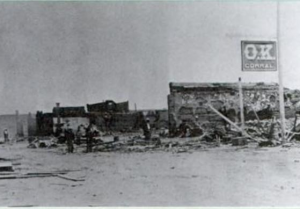 1929 would be right. I guess that the thing that seemed strange to me was the fact that when Wyatt Earp passed away, my own dad was five years old. Yes, he was an old man, and my dad a young boy, but for those five years, their life spans occupied the same space in history. And yet, my dad’s life had no connection to the time of Wyatt Earp, or to the man that he was.
1929 would be right. I guess that the thing that seemed strange to me was the fact that when Wyatt Earp passed away, my own dad was five years old. Yes, he was an old man, and my dad a young boy, but for those five years, their life spans occupied the same space in history. And yet, my dad’s life had no connection to the time of Wyatt Earp, or to the man that he was.
Wyatt Earp was a boy in search of adventure, and ran away from home twice after the Civil War broke out when he was 13. He went to join up with his two older brothers, Virgil and James. Each time he ran away, he was caught before he could reach the battlefield, and he was sent back home. Finally, at the age of 17, he left for good. His family had moved from the Illinois farm to California, but Wyatt wanted adventure, so he headed out to seek his own idea of life. He worked many different jobs, most notably as a lawman, and of course, a gambler. Life was not kind to Wyatt Earp. At a point when he was finally ready to settle down with the woman he loved, he married Urilla Sutherland, the daughter of the local hotel owner. The couple married about 1870, built a house in town, and were excitedly awaiting the birth of their first child. Then, life hit him with it’s most 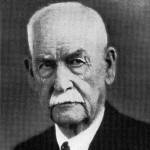 cruel blow. Within a year of their marriage Urilla contracted Typhus and died, along with their unborn child. Wyatt went off the deep end and became wild again. Eventually, he would be suspected of killing one of the suspects in his brother, Morgan’s death.
cruel blow. Within a year of their marriage Urilla contracted Typhus and died, along with their unborn child. Wyatt went off the deep end and became wild again. Eventually, he would be suspected of killing one of the suspects in his brother, Morgan’s death.
Unfortunately…or maybe fortunately, the west began to settle down. Wyatt was getting older. He settled in Los Angeles and hoped to have the Old West and his own legacy portrayed in film, but Hollywood wasn’t interested until after his death. I suppose it was then that Westerns moved into the forefront of television and movies. Westerns would then have a long run of popularity in the homes of many people…ours included.

